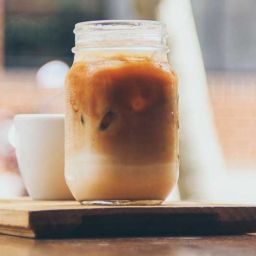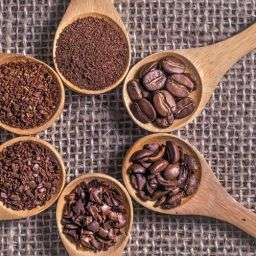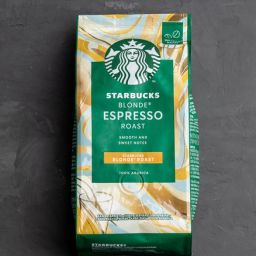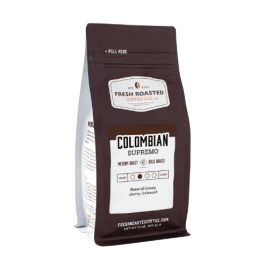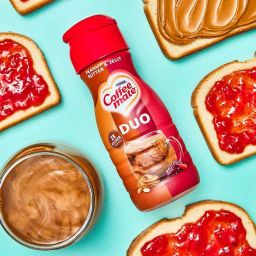
The manual pour-over coffee maker is a beloved tool for coffee aficionados, allowing precise control over the brewing process. Originating from early 20th-century innovations, it has evolved into various designs like the Chemex, V60, and Kalita Wave. This method emphasizes the art of coffee-making, turning a daily routine into a ritualistic experience.
The Importance of Manual Pour-Over in Coffee Culture
In coffee culture, manual pour-over is revered for its ability to highlight the unique flavors and aromas of coffee beans. It’s a testament to the craft of coffee brewing, where the brewer’s skill can significantly influence the final cup’s quality, offering a personalized coffee experience that many enthusiasts cherish.
Key Takeaways
- Discovering the Perfect Brew: Learn how manual pour-over allows for a tailored brewing experience, emphasizing the bean’s intrinsic flavors.
- Choosing Your Tool: Uncover the nuances of selecting the right pour-over coffee maker that aligns with your taste and lifestyle needs.
- Mastering the Technique: Gain insights into the art of pour-over brewing, from grinding to pouring, to make your perfect cup every time.
- Care and Maintenance: Understand the simple yet essential practices to keep your pour-over coffee maker in top condition, ensuring the best brew every time.
Types of Manual Pour Over Coffee Makers
Pour-over coffee makers are like the paintbrushes of the coffee world: each type offers a different path to crafting your morning masterpiece. Let’s dive into a few popular types and their pros and cons.
Chemex
The Chemex is a classic, elegant glass carafe with a conical funnel. It’s known for its clean, pure brew, which is perfect for highlighting subtle flavors in your coffee.
Pros:
- Produces a clean cup with less bitterness.
- Its design is both functional and a stylish kitchen display.
Cons:
- Fragile due to the glass material.
- Requires specific Chemex filters, which can be pricier.
V60
The Hario V60 is a ceramic, glass, or metal cone that’s all about precision, allowing you to control the brewing time and temperature finely.
Pros:
- Offers excellent control over the brewing process.
- Available in various materials to suit different preferences.
Cons:
- Requires a bit of skill to master the pour.
- The rate of flow can be too fast if not managed correctly.
Kalita Wave
The Kalita Wave stands out with its flat-bottom design, which promotes even extraction and a more consistent brew.
Pros:
- Flat-bottom design aids in consistent brew extraction.
- Relatively easy for beginners to use.
Cons:
- Not as widely available as other models.
- Some find it less flexible in tweaking the extraction process.
Melitta
Melitta is a pioneer in the pour-over brewing method, offering a simple and efficient design that’s great for coffee novices.
Pros:
- User-friendly and excellent for those new to pour-over.
- Typically more affordable than other types.
Cons:
- Offers less control over the extraction process.
- The brew can be inconsistent if not done carefully.
Choosing the Right Manual Pour Over Coffee Maker
Selecting the right pour-over coffee maker is like choosing a new friend who’ll be there for you every morning. Consider these factors to find your perfect match:
Material
- Glass offers aesthetic appeal but is fragile.
- Ceramic retains heat well and is durable.
- Metal is sturdy and portable but may alter the taste slightly.
- Plastic is affordable and durable but not the best for heat retention.
Size: Think about your daily needs. Do you brew just for yourself, or are you serving a crowd? Sizes vary, so pick one that matches your typical brewing amount.
Brand Reputation: Look for brands known for quality and consistency. User reviews, expert opinions, and community forums can offer valuable insights.
Portability: If you’re always on the move, consider a more durable and compact pour-over coffee maker that can travel with you without hassle.
Personal Preferences: Your taste preference plays a significant role. Do you prefer a bolder or a more nuanced cup? Each pour-over type has its own brewing character, so choose one that aligns with your coffee palate.
Step-by-Step Guide to Brewing with a Manual Pour Over Coffee Maker
Brewing coffee with a manual pour-over is an art form that’s as satisfying as it is flavorful. Here’s a straightforward guide to help you master the pour-over process, from bean to cup.
1. Grind Your Beans: Start with fresh coffee beans for the best flavor. Grind them to a consistency similar to sea salt. A burr grinder is ideal for achieving a consistent grind size, which is crucial for even extraction.
2. Prepare Your Filter and Coffee Maker: Place your filter in the coffee maker. If using paper, rinse it with hot water to remove any papery taste and preheat the brewer. This step also helps to stick the filter to the sides, preventing any grounds from sneaking through.
3. Measure Your Coffee and Water: The golden ratio is about 1:17 – one part coffee to seventeen parts water. This ratio can vary based on personal taste, but it’s a solid starting point. For a standard cup, 20 grams of coffee to 340 grams (ml) of water works well.
4. Bloom Your Coffee: Pour a small amount of hot water (just off the boil, around 200°F) over the grounds to wet them thoroughly. Allow this to sit for 30 seconds. This process, called blooming, releases carbon dioxide and enhances the extraction of flavors.
5. Pour the Water: After the bloom, slowly pour the remaining water in a spiral motion, starting from the center and moving outwards, then back in. Maintain a steady, slow pour, keeping the water level consistent but not too high. This step should take about 2 to 3 minutes.
6. Watch the Drip: Once you’ve poured all the water, let the coffee continue to drip until it slows to a stop. Avoid pressing or squeezing the grounds to extract every last drop; this can lead to over-extraction and bitterness.
7. Enjoy Your Coffee: Discard the filter and grounds, pour your freshly brewed coffee into your favorite cup, and enjoy. Notice the flavors and aromas that your careful brewing has unlocked.
Why It Matters
- Water Temperature: Too hot, and you risk burning the coffee; too cool, and you won’t extract enough flavor.
- Coffee-to-Water Ratio: This balance is key to extracting just the right flavor – not too strong, not too weak.
- Brewing Time: The time your water is in contact with the coffee grounds affects the extraction intensity. Too long and it’s bitter; too short and it’s underwhelming.
Tips for Perfecting Your Pour Over Technique
Brewing the perfect cup of coffee is a mix of science and art. Here are some tips to elevate your pour-over game.
Grinding
- Consistency is Key: Aim for a grind consistency similar to sea salt. Inconsistent grinds can lead to uneven extraction.
- Freshness Matters: Grind your beans just before brewing to maintain their flavor and aroma.
Water Quality
- Temperature Control: Ideal water temperature is between 195°F to 205°F. Too hot or too cold affects extraction.
- Purity: Use filtered water. Impurities can alter the taste of your coffee.
Pouring Technique
- Steady and Slow: A gooseneck kettle gives you control over the pouring speed and direction, crucial for even extraction.
- Circular Motion: Pour in a spiral motion to ensure all grounds are evenly saturated.
Experimenting with Variables
- Ratio Adjustments: Play with the coffee-to-water ratio to find your preferred strength.
- Temperature Tweaks: Slight adjustments in water temperature can highlight different flavor notes.
- Grind Size: Experiment with finer or coarser grinds to see how it affects taste.
Cleaning
- Regular Rinsing: Rinse your pour-over equipment with hot water after each use to remove coffee oils and residue.
- Occasional Deep Clean: Use a coffee equipment cleaner or a mix of vinegar and water for a thorough clean every few weeks.
Storage
- Dry Thoroughly: Before storing, ensure all parts are completely dry to prevent mold or stale odors.
- Safe Storage: Store your equipment in a dry place where it won’t get knocked over or damaged.
Consistent Checks
- Inspect for Damage: Regularly check for chips or cracks, especially in glass equipment, which can affect the brewing process.
FAQs
What’s the ideal coffee grind size for pour-over?
The grind size should resemble sea salt. Too fine, and your coffee might be over-extracted and bitter; too coarse, and it could be under-extracted and weak. Experiment to find the sweet spot for your taste.
Why is coffee blooming important?
Blooming allows gases trapped in the coffee to escape, ensuring a more even extraction. It’s a sign of fresh coffee and is key to unlocking the full flavor profile of your beans.
How can I fix a bitter or weak brew?
If your coffee is too bitter, your grind might be too fine, or you’re over-extracting. Coarsen the grind or shorten the brew time. If it’s too weak, try a finer grind or extend the brew time. Adjusting the coffee-to-water ratio can also help.
Final Thoughts
Embracing manual pour-over coffee brewing is not just about making a cup of coffee; it’s an art form that invites you to engage with the process intimately. The joy lies in the ritual—from selecting your beans to the final pour—each step a testament to the craft. It’s an opportunity to slow down, appreciate the nuances, and create a moment of pleasure in your daily routine.




